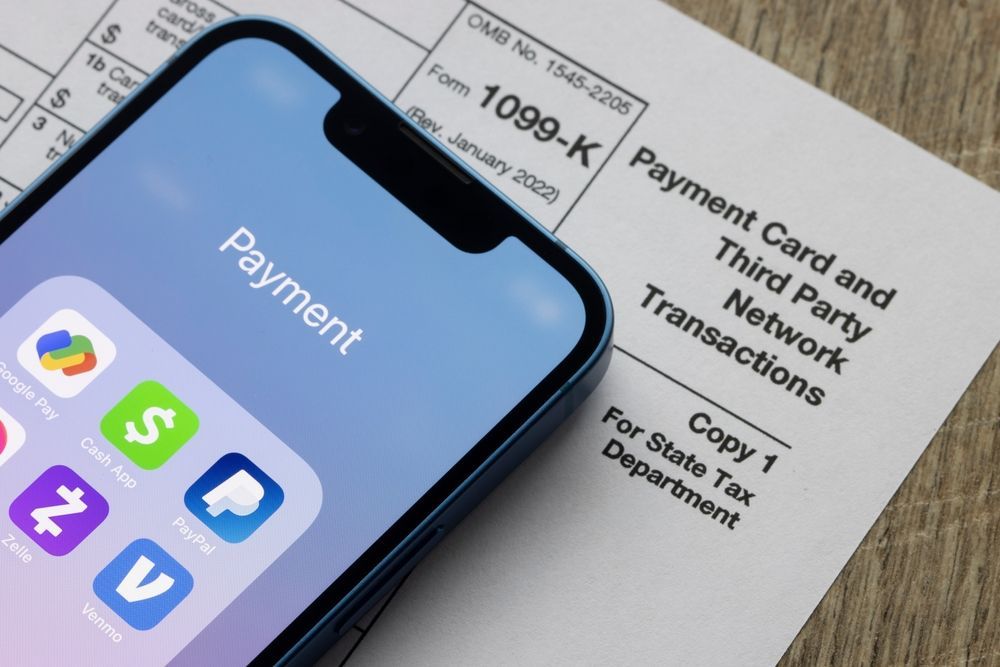TELL ME ABOUT THE HARD PART
Five Steps to Help Businesses Face, Solve & Prevent Problems
NEWSLETTER
FREE EBOOK
The Small Business Owner’s Guide to Hiring an Attorney
SERVICES
Blog

When entering contracts, small business owners often focus on the deal’s terms, payment, scope of work, and deadlines, while overlooking how the relationship can end. Yet, a clearly written termination clause is one of the most valuable tools a business can have. It provides a roadmap for how and when a contract can be ended, minimizing confusion and costly disputes. This article highlights the key features and benefits of strong termination provisions for small business owners. THE VALUE OF A WELL-DRAFTED TERMINATION CLAUSE A well-crafted termination clause sets expectations from the start. It outlines the conditions under which either party can exit the contract, such as nonpayment, breach, or prolonged nonperformance, thereby reducing uncertainty if problems arise. According to a 2024 report by the American Bar Association’s Business Law Section, contract disputes involving ambiguous termination language were nearly 30% more likely to result in litigation. Clear exit procedures, including defined notice periods and cure windows, allow parties to correct issues before escalation. For example, giving a vendor ten days to fix late deliveries before termination encourages resolution rather than immediate contract breakdown. AVOIDING ONE-SIDED TERMINATION RIGHTS Small businesses should be wary of “termination for convenience” clauses that grant only one party the right to end the contract at any time. While these provisions may seem flexible, they can expose small vendors or contractors to sudden loss of income. To balance risk, small businesses can negotiate reciprocal termination rights or require a notice period that gives them time to adjust operations. Most small businesses benefit from requiring at least 30 days notice to protect against abrupt termination and associated costs. MANAGING TERMINATION COSTS AND PENALTIES Another key consideration is whether the contract imposes termination fees, penalties, or obligations to refund deposits. For service providers, this can be a major financial risk. The Federal Trade Commission has noted that many disputes stem from unclear refund or fee provisions when services are canceled mid-term. To prevent disputes, contracts should specify how costs will be allocated, such as allowing retention of payment for work completed to date. A well-defined clause reduces post-termination arguments over what each side owes. DRAFTING FOR DIFFERENT RELATIONSHIPS Termination provisions should reflect the nature of the relationship. In long-term service contracts, flexibility may be important, while in project-based agreements, finality and deliverable-based triggers may be better suited. Some businesses include “termination for cause” (e.g., nonperformance or breach) and “termination for convenience” (mutual or limited) options to balance certainty with adaptability. Including a mediation or notice step before final termination can also preserve business relationships by encouraging good-faith communication first. CONCLUSION Termination clauses protect both parties by outlining a predictable and fair exit process. For small businesses, they help avoid unexpected losses and strengthen contractual stability. The best clauses are transparent, balanced, and tailored to the specific transaction. Taking the time to review termination terms, before signing, can save a business significant expense and frustration later. The SJS Law Firm, PLLC can help your small business draft, review, and negotiate termination provisions that protect their interests. For a consultation, contact us at (202) 505-5309. TERMINATION CLAUSE CHECKLIST FOR SMALL BUSINESS OWNERS When reviewing or drafting a termination clause, make sure it includes: Grounds for Termination: Clearly define when either party may terminate (e.g., breach, nonpayment, prolonged nonperformance). Notice Requirement: Specify how much notice must be given before termination (typically 10–30 days). Cure Period: Allow time for the other party to fix issues before termination takes effect. Termination for Convenience: If included, make it mutual or require reasonable notice to prevent unfair surprises. Payment Obligations: Clarify whether fees, deposits, or partial payments will be refunded or retained. Post-Termination Responsibilities: Outline what happens to outstanding work, materials, or confidential information. Dispute Resolution Step: Consider including a mediation or notice requirement before final termination. Source Notes: American Bar Association, 2024 Business Law Section Report on Contract Litigation ; Contract Termination Guidelines (2023) ; Federal Trade Commission, Common Contract Dispute Patterns in Service Industries (2024) .

Government contracts can represent tremendous opportunities for small businesses, steady revenue, prestige, and potential growth. But bidding on government work isn’t like doing business in the private sector. The rules are stricter, expectations are higher, and missteps can cost you the bid or even lead to legal trouble. Before you put pen to paper (or cursor to form), here are key legal considerations every small business needs to address. Register With the Proper Authorities & Get Your Identifiers in Place You can’t bid unless you’re properly registered. For federal contracts, that often means registering on SAM.gov (System for Award Management). There you’ll obtain your Unique Entity Identifier (UEI) , a 12-character alphanumeric code that uniquely identifies your entity. Without this, your bid may be disqualified up front. Determine your NAICS codes (North American Industry Classification System). These tell agencies what you do and how big your business can be (in terms of revenue or employees) for it to count as small. These registrations and codes are foundational. Understand Small Business Certifications & Set Aside Programs Because of programs run by the SBA (Small Business Administration), many government contracts are set aside exclusively for small businesses. There are also special programs like 8(a) (for socioeconomically disadvantaged businesses), HUBZone (businesses in historically under utilized zones), Women-Owned Small Business (WOSB), and service disabled veteran business status. If you qualify, getting certified under one or more programs can give you a competitive edge. Know What Types of Contracts You’ll Encounter Government contracts aren’t completely universal. Some of the common types include: Fixed Price Contracts : You agree to a price ahead of time, and regardless of actual costs, you deliver for that price. Cost Reimbursement Contracts : You can be reimbursed for allowable costs and then typically add a fee or profit. These carry much more risk but also more potential benefit. Indefinite Delivery / Indefinite Quantity (IDIQ), Time & Materials (T&M) , and others, each have unique risk/benefit profiles. Understanding which your business is best suited for (or is asked to bid on) matters for pricing, compliance, and accounting. Comply with Federal Acquisition Rules & Relevant Regulations The FAR (Federal Acquisition Regulation) system is what governs the federal contract bidding process. It contains rules on everything from how you must represent your business size, how you must treat subcontracting, to labor laws, small business programs, and more. Violating FAR regulations, even unintentionally, can lead to disqualification or worse. Also, stay current with procurement regulations and labor laws for the jurisdictions where the contract will be performed. If you do work in Washington D.C., Maryland, or Virginia (for example), you’ll need to cross check state and local procurement rules. Build a Strong Bid or Proposal Your technical proposal, pricing, deliverables, and compliance with RFP (Request for Proposal) instructions each matter heavily. A winning bid usually includes: A clean, well organized statement of qualifications References or past performance documentation showing you can deliver Realistic pricing that accounts for compliance costs, labor, insurance, and required overheads Proof that you meet all required certifications, registrations, and bonding or insurance mandates Skipping any required document or misunderstanding the RFP instructions is one of the fastest ways to have your bid rejected. In addition, small businesses should be ready to demonstrate financial responsibility, which often includes providing proof of how they handle payroll and vendor payments. Simple tools like business checks can help keep transactions professional, traceable, and aligned with the government’s preference for clear financial records. Stay Prepared After You Win Winning the contract is only half the battle. After the contract is won, there are legal obligations: performance standards, audit rights, submitting invoices properly, following security or data protection mandates, and ensuring any subcontractors follow required rules too. Contract non performance or regulatory non compliance can risk losing the contract or facing penalties. Government contracting can be a game changer for small businesses, but only if you come in prepared. Register properly, understand which programs and certifications apply to you, know the types of contracts, make sure your proposal is thorough and compliant, and be ready to meet all ongoing obligations if you win. When you approach the process with the right legal groundwork, the 101 stage becomes your solid foundation for success. Written by the staff writing team at HappyWriters.co

In today’s environment, data privacy and security are no longer just “nice to have”, they’re legal necessities. Small businesses too often assume they’re under the radar, but state and federal legal obligations, consumer expectations, and litigation risk make privacy a serious concern. Below is a checklist of legal and practical steps that every small business should consider to protect customer data, avoid regulatory penalties, and build trust. Determine Which Laws Apply to Your Business Different jurisdictions impose different requirements. Some laws to check for include: Federal laws like the FTC Act, HIPAA (for health data), GLBA (for financial institutions), and the Children’s Online Privacy Protection Act (COPPA). State privacy laws such as the California Consumer Privacy Act (CCPA), even if you don’t operate in California but collect data from residents there. Industry regulations that may overlap with federal and state frameworks. In Maryland, businesses must comply with the Maryland Personal Information Protection Act (PIPA), which requires prompt notification of residents if their personal data has been compromised. In Washington, D.C., companies handling consumer data must follow the Security Breach Notification Act, which sets strict timelines for notifying affected individuals after a data breach. Make a list of the laws you must follow based on where your business is, where your customers are, and what kinds of data you process. Audit What Personal Data You Collect, Store, and Share Understanding your data flows is fundamental. Questions to answer: Exactly what personal data do you collect? (Names, emails, addresses, geolocations, payment info, etc.) Where is it stored? On-site servers, cloud-storage, third-party vendors? Who has access, internally (employees) and externally (vendors, partners)? Why is each piece of data collected? Is it necessary? (Minimization principle.) Document this in writing. Data inventory is often required under privacy regimes. Build & Publish a Clear Privacy Policy Your privacy policy should accurately reflect your data practices. It needs to clearly cover: What personal data you collect and why How long you retain data, and when/how you delete it Who you share data with (vendors, partners) User rights (access, correction, deletion) under applicable laws Security measures in place to protect data If your policy is vague or doesn’t match what you actually do, it creates legal risk. Implement Secure Data Handling and Retention Practices Even with a policy, practice matters. Key elements include: Using encryption for data at rest and in transit (SSL/TLS) Strong password policies and multi factor authentication (MFA) for internal access Regularly training employees on data security and privacy awareness Limiting access to sensitive data to only those who need it Deleting or anonymizing personal data once its purpose is over Using management software that includes built in compliance and security features can also help small businesses streamline retention, access controls, and data deletion. Vendor & Third-Party Risk Management Often, small businesses outsource parts of their operations to CRM providers, payment processors and cloud services, but that doesn’t remove your legal obligations. You should: Vet vendors: check their security certifications, privacy practices, breach history Use written agreements: data processing agreements or vendor contracts that require vendor compliance with relevant laws and security measures Know where vendor-stored data resides physically and legally (especially relevant under state laws or international jurisdictions) Prepare for Consumer Rights & Data Subject Requests Many privacy laws give consumers rights such as: Requesting access to what data you hold on them Deleting or correcting data Opt-out of certain types of data sharing or sales Set up internal procedures so you can respond to these requests within required deadlines. Document every step to show compliance. Plan for Incidents & Breaches Even the best systems can be compromised. You should: Have an incident response plan: who does what, when, how to notify affected individuals Buy appropriate cyber liability or data breach insurance Maintain audit logs and monitor for unusual activity Know the legal requirement for breach notification: which laws require you to notify affected persons and authorities, and within what timeframe Maintain Ongoing Compliance & Review Privacy isn’t a one-time project. Laws change, your business changes. To stay compliant: Periodically review your data inventory, policies, and practices Stay updated on changes in relevant privacy laws (state, federal, international) Get external audits or legal review if possible For small businesses, investing time and resources in data privacy and security isn’t optional, it’s vital. Litigations, fines, and customer distrust can cost far more in the long run than the cost of implementing sound policies today. Use this checklist as your framework. When you build good practices from the beginning, you protect your business, your customers, and your reputation. Written by the staff writing team at HappyWriters.co

When drafting contracts, many small business owners face the question of whether to include an arbitration clause. Arbitration is a private process where disputes are resolved outside of court, usually by a neutral third party. For small businesses, arbitration clauses can offer meaningful benefits, but they also carry important trade-offs. This newsletter highlights the key considerations for entrepreneurs weighing arbitration as part of their legal strategy. THE POTENTIAL BENEFITS OF ARBITRATION For small businesses, the most significant advantage of arbitration is efficiency. Proceedings are often faster and less formal than litigation, saving both time and legal expenses. Recent data from the American Arbitration Association shows that consumer arbitrations involving claims under $10,000 required claimants to pay an average of only $96 upfront, a fraction of typical court filing and service fees. Arbitration is also private, allowing businesses to resolve disputes without the public exposure of court filings, and it gives parties more flexibility to select arbitrators with industry-specific expertise. For example, in technical sectors or for construction disputes, the ability to choose an arbitrator familiar with the subject matter can be invaluable. THE CHALLENGES AND RISKS Despite these benefits, arbitration has drawbacks that small businesses must weigh carefully. One concern is the finality of the process: arbitration awards are binding and extremely difficult to appeal, even if the arbitrator makes a mistake. Costs can also escalate, where filing fees can start at $2,000 for two-party matters, significantly higher than the fees in many courts. In addition to paying arbitrators by the hour, parties must also account for the legal fees they pay to their attorneys, which can make the overall expense substantial. Another challenge is that arbitration clauses are widespread in contracts drafted by larger players, often skewing the balance of power. The Economic Policy Institute has reported that more than half of private-sector employers already require arbitration in employment contracts, and nearly a third of those also include class-action waivers. In consumer finance, the Consumer Financial Protection Bureau has found that arbitration clauses appear in about 53% of credit card agreements and more than 90% of prepaid card contracts, meaning small businesses may find themselves bound by terms they did not negotiate. BALANCING THE DECISION Ultimately, whether arbitration clauses are effective depends on the specific circumstances of the business and the contract. For ongoing relationships with trusted partners, arbitration may provide a streamlined and less adversarial path to resolution. But for small businesses engaging with larger corporations or consumers, arbitration clauses may limit options and restrict leverage. The prevalence of arbitration in both employment and consumer markets underscores its growing importance, but also signals the need for careful tailoring to avoid unintended consequences. CONCLUSION Arbitration can be a valuable tool for small businesses seeking efficiency, privacy, and subject-matter expertise in dispute resolution. At the same time, its finality, potential costs, and risk of imbalance must be considered before adopting these clauses wholesale. For many small businesses, the best approach may be to draft arbitration provisions narrowly, allowing arbitration for certain disputes while preserving the option to go to court in others. The SJS Law Firm, PLLC remains committed to guiding small business owners through contract negotiations and dispute resolution planning. For a complimentary consultation, please contact us at (202) 505-5309. Source Notes: American Arbitration Association, Consumer Arbitration Fact Sheet ; Economic Policy Institute, The Future of Mandatory Arbitration Clauses in Employment Contracts (2023); Consumer Financial Protection Bureau, Arbitration Clauses in Consumer Finance Markets (2024); JAMS, Arbitration Schedule of Fees & Costs .

As Black Business Month is celebrated this August, it is important to take a closer look at the realities and achievements of Black-owned enterprises in today’s economy. 2024 data from the U.S. Census Bureau and the Federal Reserve provide a clear picture of the scale and economic footprint of Black-owned enterprises, and their continued challenges with profitability and access to capital. This newsletter highlights the most up-to-date statistics available, offering a broad view of the landscape for Black-owned enterprises. THE CURRENT LANDSCAPE OF BLACK-OWNED BUSINESSES According to the Census Bureau’s December 19, 2024 release of the Annual Business Survey covering 2022, the United States had an estimated 194,585 Black- or African American-owned employer firms. Those companies generated about $211.8 billion in annual receipts, employed roughly 1.6 million workers, and paid approximately $61.2 billion in annual payroll. A quarter of Black-owned employer firms operated in Health Care and Social Assistance, underscoring the sector’s central role in Black business formation and job creation. Most Black-owned businesses operate without employees. The Census Bureau’s Nonemployer Statistics by Demographics (released August 8, 2024, covering 2021) reported approximately 4,128,432 Black-owned nonemployer businesses. These businesses accounted for about 14.5% of all nonemployer businesses nationwide and generated an estimated $109.8 billion in receipts. This illustrates the breadth of Black entrepreneurship across sole proprietorships and microbusinesses, which often serve as pipelines for future employer firms. PERFORMANCE AND EXPECTATIONS The Federal Reserve Banks’ 2024 publication Firms in Focus: Chartbook on Firms by Race and Ethnicity of Ownership (based on the 2023 Small Business Credit Survey of small business employer firms) provides detail on performance and outlook. At the end of 2022, only 28% of surveyed Black-owned employer firms reported operating at a profit, compared with 50% of white-owned employer firms. Even with those challenges, expectations remained optimistic: going into 2024, 77% of Black-owned employer firms anticipated revenue growth over the next 12 months, and 58% anticipated expanding headcount. These optimistic expectations highlight the resilience and forward-looking confidence of Black business owners. CHALLENGES IN ACCESS TO CAPITAL Financing remains a binding constraint. Among credit applicants in the 2023 survey year, as summarized in the Federal Reserve Banks’ 2024 chartbook, only 32% of Black-owned employer firms were fully approved for the financing they sought, compared with 56% of white-owned firms. Denial rates showed a mirror image: 41% of Black-owned applicants were denied outright, compared with 18% of white-owned applicants. These disparities continue to shape growth trajectories of black-owned enterprises by limiting the ability to invest in inventory, equipment, and payroll when demand is rising. CONCLUSION Taken together, the 2024 releases point to a Black-owned business ecosystem that is broad in participation, increasingly present in employment-creating firms, and concentrated in service sectors like health care, while still contending with profitability headwinds and sharply uneven access to credit. For organizations looking to support Black businesses, the message is clear: pair demand-side opportunity with capital readiness, credit access, and working-capital solutions, so that promising firms can translate strong pipelines into durable job growth. The SJS Law Firm, PLLC remains committed to supporting and advising entrepreneurs as they navigate these challenges and opportunities. For a complimentary consultation, please contact us at (202) 505-5309. Source Notes: U.S. Census Bureau, Annual Business Survey , reference year 2022 (released Dec. 19, 2024); U.S. Census Bureau, Nonemployer Statistics by Demographics , reference year 2021 (released Aug. 8, 2024); Federal Reserve Banks, Firms in Focus: Chartbook on Firms by Race and Ethnicity of Ownership (based on the 2023 Small Business Credit Survey), 2024.

Contracts are not just legal formalities; they are foundational tools that clarify expectations, outline responsibilities, and provide recourse if an issue occurs. For small businesses, getting the details right can mean the difference between a smooth engagement and an expensive dispute down the line. Therefore, contracts should be drafted with careful consideration and should not be reused without revision. Whether you are working with clients, independent contractors or vendors, here are some tips to make sure your contracts work for you and not against you: Be Precise About Scope, Deliverables, and Deadlines: Each contract should clearly define what work is being performed, what is included and excluded, when it is due, and how it will be delivered. Ambiguity around scope, deliverables, and deadlines can lead to disputes that will not only delay projects but also jeopardize business relationships because it erodes trust, creates friction over perceived obligations and can make future engagements less likely. Being detailed makes it easier to hold both sides accountable. Protect your Intellectual Property and Confidential Information: If your business involves creative work, proprietary materials, or client data, you should include provisions addressing ownership and confidentiality obligations. The contract should clearly state who owns the final work product and the underlying materials used to make the final work product and whether your business can use the final work product in its portfolio. In determining ownership of intellectual property, it is imperative that you know both industry standards and your own preferences to strike a balance that protects your rights and meets the expectations of clients. Include a Fair and Clear Termination Clause: A strong contract includes an exit plan. Contracts should state the conditions for either party’s termination, especially if there is a cure provision, how much notice is required, and what happens to any payments, works in progress, or confidential information upon termination. Avoid One-Size-Fits-All Contracts and Seek Legal Opinion: Using the same contracts across different clients can expose you to unnecessary risk if the terms are not tailored to the specific relationship or work. Make sure each contract reflects your actual agreement, including key business terms, deliverables, and payment structures. Pay close attention to potentially risky clauses like indemnity provisions or overly broad non-competes. If you are unsure about certain language and potential implications, having a legal professional review the document can help identify red flags and ensure you are fully protected. The SJS Law Firm, PLLC can help your small business draft effective contracts. For a complimentary consultation, please contact us at (202) 505-5309.

As National Small Business Month unfolds this May, it's the perfect time to consider how intellectual property (IP) protection can become a cornerstone of your business strategy. For small businesses and startups, intellectual property often represents your most valuable assets—from your brand identity to your innovative products or services. Yet many entrepreneurs overlook the importance of properly securing these assets, potentially leaving their businesses vulnerable and missing opportunities for growth. This article explores how comprehensive IP protection, notably through trademark, copyright, patents, and trade secrets, can strengthen your small business and create pathways for expansion. UNDERSTANDING YOUR INTELLECTUAL PROPERTY PORTFOLIO Every business, regardless of size or industry, possesses intellectual property. Your company name, logo, product designs, proprietary processes, custom software, marketing materials, and even customer lists all fall under the umbrella of intellectual property. For service-based businesses, your methodologies and systems may constitute valuable trade secrets. The first step toward effective IP protection is identifying what assets you have that deserve protection. Many small business owners are surprised to discover just how extensive their IP portfolio actually is when they take proper inventory. WHY IP PROTECTION MATTERS FOR SMALL BUSINESSES Beyond simply preventing others from copying your work, proper IP protection can significantly impact your business valuation and growth potential. Registration of intellectual property creates tangible assets that can be leveraged for financing, licensing arrangements, or investment opportunities. For example, a patent portfolio can demonstrate innovation and market advantage to potential investors, while trademark registrations can allow you to expand through franchising or licensing. Additionally, in today's digital marketplace, IP infringement happens regularly—having established protections gives you legal recourse when someone uses your intellectual property without permission. COMMON IP PITFALLS FOR SMALL BUSINESSES Many small business owners make costly mistakes when it comes to intellectual property. One common error is failing to conduct proper trademark searches before launching a new brand or product line, potentially resulting in infringement claims from existing trademark holders. Another pitfall is sharing proprietary information without proper confidentiality agreements in place. Even seemingly minor oversights, like not having employees sign IP assignment agreements, can create complications down the road when questions of ownership arise. Additionally, international protection is frequently overlooked—while U.S. registration provides domestic protection, separate filings are generally needed to protect your IP in foreign markets. CREATING AN IP STRATEGY FOR LONG-TERM SUCCESS A proactive intellectual property strategy should be integrated into your broader business plan. This begins with comprehensive IP audits to identify assets requiring protection, followed by prioritizing which protections to pursue based on business goals and budget considerations. Developing clear policies for handling confidential information and creating standardized agreements for employees, contractors, and business partners ensures consistent protection across all business relationships. For businesses with digital presence, monitoring for online infringement and having enforcement protocols in place has become increasingly important. The most successful small businesses view IP protection not as a one-time legal task but as an ongoing strategic initiative. CONCLUSION This National Small Business Month, take proactive steps to evaluate how well your intellectual property is protected and how it can be leveraged for growth. Doing so can prevent costly problems later while potentially opening new revenue streams through licensing and strategic partnerships. The SJS Law Firm, PLLC can help your small business secure necessary IP protection registrations and draft effective agreements for continued protection of your business’ proprietary assets. For a complimentary consultation, please contact us at (202) 505-5309.

In 2022, Maryland passed the Time to Care Act to establish a state-mandated family and medical leave insurance program which would provide eligible employees with job-protected paid leave to care for themselves or a family member with a serious health condition, to bond with a child, or to make arrangements for a family member’s military deployment. Under the Paid Family and Medical Leave (PFML) program, eligible employees will be paid up to $1,000 a week for up to 12 weeks (or 24 weeks under certain circumstances) of covered leave. The program will be funded through employer and employee contributions, although employers with fewer than 15 employees are not required to contribute to the program. Contributions to the program fund are scheduled to begin on July 1, 2025, with benefits becoming available starting July 1, 2026. Employers cannot outright refuse to provide paid family and medical leave but may choose between the state’s program or state approved commercial or self-insurance plan. Who are the Mandated Employers; Are There Exceptions? All employers with at least one worker in Maryland will be required to offer paid family and medical leave insurance. However, a sole owner of a sole proprietorship, LLC, C- or S-Corp who is also the only employee of that entity is not required to provide PFML; such employers may opt into the program. Who are the Eligible Employees? Employees who worked at least 680 hours in Maryland during the 12-month period before the leave is to begin are eligible for PFML. How Much Must Employees and Employers Contribute to the State Program? The rate of contributions for the state’s program will depend on the employer’s payroll size; the rate will be 0.90% of covered wages up to the Social Security cap and employers may withhold up to 0.45% of the contribution rate from the employees’ pay. Employers with less than 15 employees will have a rate of 0.45% and may withhold up to the full amount from paychecks. Private plans will set their own rates. What is the Effective Date of the PFML? Contributions are scheduled to begin in July, 2026. However, in February 2025, the Maryland Department of Labor proposed a new timeline for implementation of the PFML program, with Maryland Labor Secretary Portia Wu citing instability and uncertainties of the times; under the proposed timeline, contributions to the fund would begin on January 1, 2027 and benefits would become available as of January 1, 2028. The Maryland General Assembly has yet to take legislative action regarding the proposed timeline. Notification of Employees Employers must notify their employees of PFML when the employee is hired, once a year, and when the employer knows that an employee's leave request may qualify for PFML. What are the Penalties for Non-compliance? The Maryland Department of Labor may order employees to pay the contributions plus interest, twice the amount of contributions withheld, penalties of up to $1,000 per violation, etc. Business To-Dos Review payroll to determine which employees are eligible for PFML Determine whether to opt into the state program or a private program Set up payroll systems to manage applicable employer and employee deductions Submit wage and hour reports each quarter as required by the Maryland Department of Labor Ensure PFML eligibility is properly communicated to employees upon hire and at other required times; consider making changes to employee handbooks if applicable Stay updated on PFML changes, especially regarding dates of contribution and benefit availability

This tax season, an IRS rule change may require many freelancers, contractors, gig workers, and small business owners who use third party payment platforms or online marketplaces like Cash App, Paypal, Venmo, Stripe to comply with new tax reporting requirements. The IRS’ rule, which requires third party payment platforms to issue 1099-K forms to certain users for tax reporting, was supposed to go into effect in 2021 but was postponed through 2023 and is now being implemented in phases. Originally, the rule required third party payment platforms to issue 1099-K forms for users who had 200 transactions totaling more than $20,000 within a year. The new rule eliminates the number of transactions and lowers the dollar amount threshold per year. For instance, the dollar amount threshold for the 2024 calendar year is $5,000. In 2025, the threshold amount will be further reduced to $2,500, and in 2026, the threshold amount will be $600. With this new rule change, small businesses who previously did not receive 1099-K forms can expect to receive them and to report them on their tax returns. To small businesses in states like Maryland and Virginia, which already have a $600 reporting threshold, this IRS rule change comes as no surprise. It is important to note that third party payment platforms are only required to issue 1099-K forms for business transactions—payment for goods or services, including tips, and rent payments—amounting to the dollar threshold on that particular platform; the rule does not apply to personal transactions. Further, businesses should know that business transactions on the Zelle payment platform are not subject to 1099-K reporting requirements since the platform doesn’t hold money in an account like other payment platforms. However, Zelle business transactions should be reported on Schedule C of Form 1040 for tax compliance. Due to the nature of third party payment platforms, it is imperative to ensure that your business’ 1099-K form is accurate. Small businesses should consider setting up multiple accounts to keep reportable transactions separate from personal transactions. Additionally, businesses should promptly contact their payment platform if the platform issues an incorrect 1099-K to ask for a corrected form. Note that this rule change does not alter businesses’ tax obligations in any way. The SJS Law Firm can help your small business navigate these new regulatory changes. For a complimentary consultation, please contact us at (202) 505-5309.

The COVID-19 pandemic significantly changed working conditions for most workers. One of the changes the pandemic brought to work culture was teleworking, which permits employees to work from their homes or in other locations. While many employers, like Amazon, have called their employees back to the office, teleworking is now a permanent fixture of the workplace. To keep up with the evolving landscape of work, employers must ensure that they have an effective telework policy in place to facilitate productivity; below are some tips on how to do so. Include the Following Provisions in Your Telework Policy: Scope of the Policy: The policy should be used for employees’ job responsibilities and should not serve as a way for employees to take care of their independent personal obligations. If the policy is intermittent, detail how long an employee may work remotely. Employee Eligibility: State what type of employees will be eligible for remote work. For example, full-time employees, part-time employees, or those who have worked for 1 year. Request and Approval: If telework is not a standing policy, put in place a procedure through which employees can request, and supervisors can approve telework requests. It is also important to lay out the criteria for approving or rejecting such requests. Work Expectations: Set forth where employees may or may not work while remote, establish work hours when employees must be available, the method of communication with other workers, and any work policies employees must abide by; this should include any measures to protect company or client data as well as other confidential information. Equipment and Supplies: If the company will provide equipment and supplies for remote work, the policy should include the conditions of such use and their return. Failure to Comply with Policy: The company should reserve the right to deny or revoke an employee’s telework privileges in response to the company’s needs, an employee’s failure to abide by or abuse the policy, and any further consequences. The policy should also state whether or not an employee’s participation in or removal from telework is subject to a review or appeal process. Conclusion While these provisions are not exhaustive of the items to include in a telework policy, they are essential in any effective policy. The SJS Law Firm, PLLC, can help your small business draft effective telework policies. For a complimentary consultation, please contact us (202) 505-5309.

